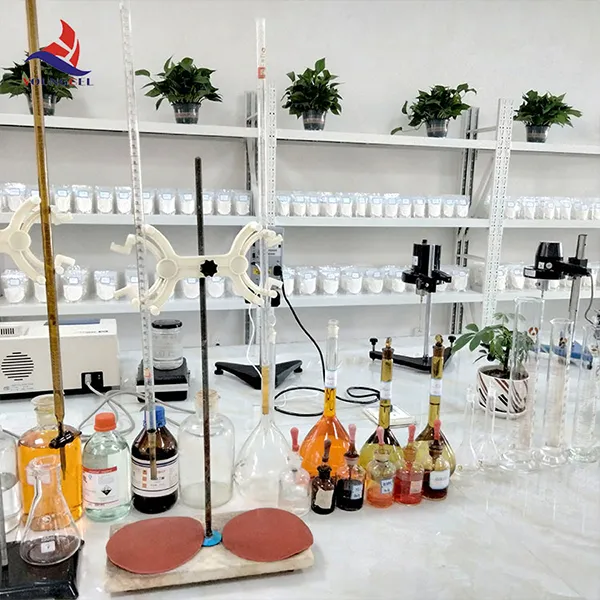Building Adhesives The Unsung Heroes of Construction
In the modern construction industry, the role of building adhesives is often overlooked. While beams and bricks may dominate the landscape, it is the adhesives that act as the silent bond holding everything together. These materials have revolutionized the way we build and maintain structures, providing strength, flexibility, and durability.
The Evolution of Building Adhesives
Historically, construction relied heavily on mechanical fastening methods such as nails, screws, and bolts. However, as materials and design techniques evolved, so did the need for more versatile bonding solutions. The introduction of synthetic polymers like epoxy, polyurethane, and acrylics emerged in the mid-20th century, paving the way for advanced adhesive technology. These modern adhesives have greatly expanded the possibilities in design and construction, allowing for unique architectural expressions that were previously unattainable.
Types of Building Adhesives
1. Epoxy Adhesives Known for their exceptional strength and weather resistance, epoxy adhesives are widely utilized in structural bonding. They cure through a chemical reaction that offers great bonding strength and durability, making them ideal for heavy-duty applications.
2. Polyurethane Adhesives These versatile adhesives are known for their flexibility and ability to bond dissimilar materials. They are often used in the construction of wooden structures, offering excellent resistance to moisture and temperature fluctuations.
3. Acrylic Adhesives With their rapid curing times, acrylics are perfect for applications requiring a quick bond. They can bond to various surfaces, including metals and plastics, making them suitable for a wide range of construction projects.
4. Silicone Adhesives Renowned for their elasticity and environmental resistance, silicone adhesives are commonly used in sealing applications and for bonding glass, metal, or plastic. Their high-temperature resistance and durability in diverse conditions make them essential in construction.
5. Hot Melt Adhesives These thermoplastic adhesives are applied in melted form and solidify upon cooling. They are often used in assembly processes due to their fast setting times and ease of application.
Applications in Construction
building adhesive

Building adhesives serve an array of purposes from residential houses to large commercial buildings. They are essential in flooring installation, window and door framing, roofing, and even in the manufacturing of prefabricated components. In interior design, adhesives play a crucial role in adhering wall panels and decorative trims, contributing to both aesthetic appeal and structural integrity.
Moreover, adhesives are vital in the construction of sustainable buildings. As the industry shifts towards more eco-friendly practices, adhesive technologies have evolved to meet these demands. Many manufacturers now offer low-VOC (volatile organic compounds) options, ensuring safer indoor environments and reduced environmental impact.
Advantages of Using Building Adhesives
The advantages of using building adhesives are manifold. They can significantly reduce the weight of structures compared to traditional mechanical fastening methods, leading to lower transportation costs and easier handling. Adhesives also provide a seamless finish, eliminating the need for visible fasteners, enhancing aesthetic appeal.
Furthermore, the use of adhesives can prevent corrosion and deterioration associated with mechanical fasteners, thus extending the lifespan of structures. They also allow for some degree of flexibility in materials, enabling structures to withstand movement due to thermal expansion, seismic activity, or wind loads.
Challenges and Considerations
Despite their numerous benefits, using building adhesives comes with certain challenges. The choice of adhesive must be carefully considered based on the materials being bonded, environmental conditions, and the specific requirements of each project. Depending on the formulation, some adhesives may have longer curing times or require specific application techniques, which can impact project timelines.
Additionally, the adhesive's temperature and humidity tolerances must be taken into account to ensure effective bonding and long-term performance. As with any material, properly following manufacturer instructions and guidelines is essential.
Conclusion
Building adhesives may not be the most glamorous aspect of construction, but their importance cannot be overstated. As technology continues to advance, the variety and performance of adhesives will undoubtedly improve, further cementing their role as essential players in the construction industry. Embracing these materials can lead to stronger, more efficient, and more innovative building practices that meet the needs of today and tomorrow. In the quest for modern architecture, adhesives will continue to serve as the unsung heroes of construction, creating bonds that last.
-
Rdp Powder: Key Considerations for Wholesalers in the Building Materials IndustryNewsJul.08,2025
-
Key Considerations for Wholesalers: Navigating the World of Hpmc - Based ProductsNewsJul.08,2025
-
Hpmc Detergent: Key Considerations for WholesalersNewsJul.08,2025
-
Key Considerations for Wholesalers: China Hpmc For Tile Adhesive, Coating Additives, Concrete Additives, and MoreNewsJul.08,2025
-
Crucial Considerations for Wholesalers: Navigating the World of Construction MaterialsNewsJul.08,2025
-
Key Considerations for Wholesalers Sourcing Additive For Cement, Additive For Concrete, Additive For Putty from Additive Manufacturer Shijiazhuang Gaocheng District Yongfeng Cellulose Co., Ltd.NewsJul.08,2025




